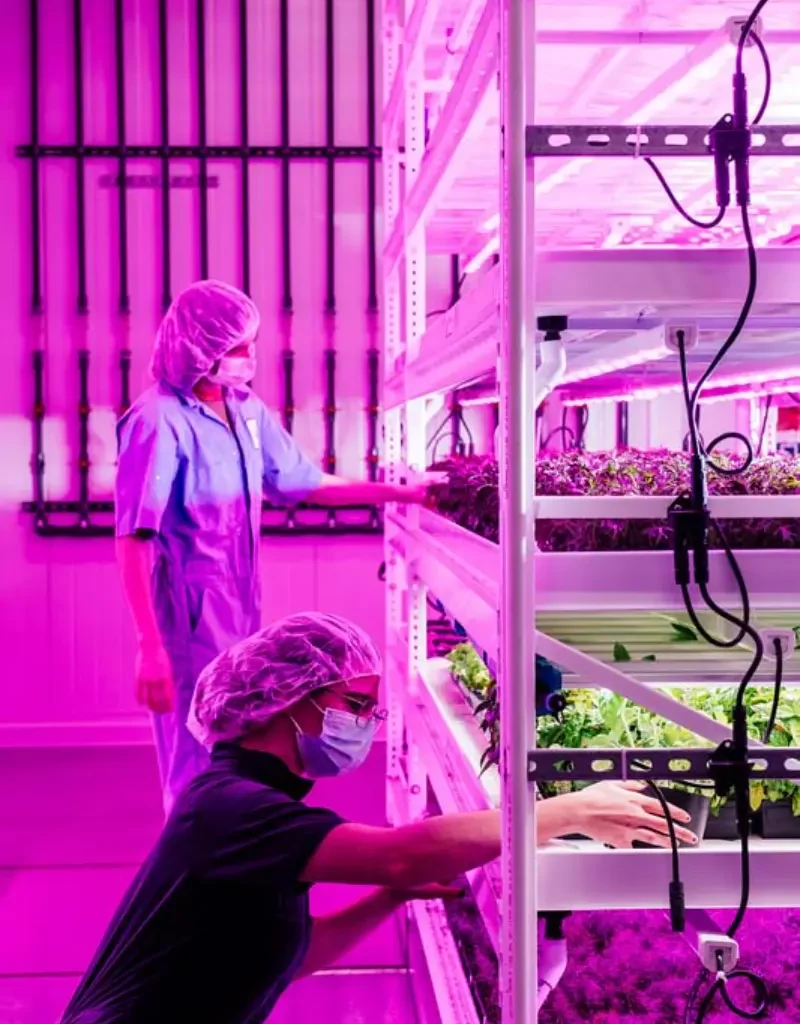Growing food is a necessity, but how we grow it matters. The right approach can mean the difference between resource waste and smart conservation. As sustainable farming takes center stage, indoor cultivation facilities are turning to advanced lighting, climate controls, and technology to boost efficiency while minimizing waste.
All areas of agriculture, including cannabis cultivation, are adopting SOPs, IPM strategies, and fertigation approaches that account for the health of the plants and those who work with them. With vertical farming, cultivators can increase yield while supplying more food or medicine with less space.
Are you interested in learning why vertical farming is essential for the planet? Join the team at Pipp Horticulture as we explore five sustainable advantages.
1. Increased Yield and More Happy Customers
Usable agricultural land is rapidly declining with rising populations and urbanization. However, vertical cannabis facilities require less space, even when housing thousands of plants. Growing upwards rather than outwards allows cultivators to retrofit pre-existing buildings to accommodate increased crop sizes and yields.
Cultivating in food deserts or places with limited supplies is where urban multitier facilities can reduce transportation miles and storage, reducing their carbon footprint and ensuring customers receive the freshest products.
Moreover, growers can plant their roots nearly anywhere, from untillable deserts to city-based warehouses. This allows creative cultivators who use fully mobile multitier racking to meet yield requirements in smaller, higher-priced spaces.
Our designers at Pipp recognize the necessity of remaining nimble, adapting to building floorplans, and providing solutions on a case-by-case basis. Vertical Grow Racks allow you to produce in rooms with pillars and structural limitations, but you will always have several options to consider. Reach out to Pipp to explore creative solutions for your space that maximize your cultivation output.
2. Water Use Efficiency
Vertical farms are designed with attention to water management, allowing for precise management at various stages of the water life cycle. This accuracy helps decrease water consumption by 95% or more.
Indoor cultivation facilities can recycle water from fertigation and dehumidification. While water needs assessment and treatment before reentering the cycle, various filtration technologies make 100% reuse a reality. Additionally, irrigation can be automated, calibrated, and adjusted while the runoff is measured, allowing for the fine-tuning of a media management strategy.
3. Curbs Pesticide & Fertilizer Use
As mentioned briefly above, the nature of indoor farming protects against pests and the elements, meaning chemical use is limited. Automated fertigation systems deliver the precise amount of nutrients needed — at the right time — to maintain plant health and media management metrics. These controls allow cultivators and IPM management teams to create protocols that reduce risk and pesticide/pathogen treatments used to mitigate outbreaks.
Due to the consistent and clean environment, vertical farming systems allow more effective IPM applications and accurate plant management systems. With established preventative measures, cultivation facilities can scale effectively while using less pesticides and fertilizer.
4. Data Collection
So, how does building a sophisticated multitier facility change agriculture? Data. Accurate measurements drive improved room utilization and fertigation/airflow management while lowering production costs per pound of tomatoes or cannabis.
Data also underscores production metrics like grams/sf and price per pound, specifically in an indoor cultivation facility. Growers have multiple data-collecting opportunities to achieve the highest return on every kilowatt-hour or resource used.
For instance, controlling light intensity, adjusting temperature/humidity, and modifying airflow offer significant advantages over traditional farming methods. This level of control yields consistent results and provides avenues for improvement.
Furthermore, data from indoor agriculture has influenced traditional agriculture as the adoption of evolving purpose-built technology increases. Data is such a broad concept, but by focusing on the KPIs that matter to your business and collecting data that has an impact, you can confidently invest in the solutions you need.
5. Quality
Proper lighting, room pressurizations, quality SOPs, and environmental/fertigation controls help maximize cultivar expression in cannabis and bioflavinoid production in basil or prevent bolting in lettuce across tiers.
Still, indoor vertical farming isn’t about packing as much canopy into a room as possible. Instead, you optimize space and ensure every mechanical system works together seamlessly.
For example, the spacing between tiers should be carefully calibrated to your lighting setup, as this directly impacts plant performance. By understanding how racking, lighting, HVACD, fertigation, and genetics interact, you can fine-tune each cultivar to achieve its full potential.
One of the best ways to diagnose problems and maintain plant health is through regular inspection for pests, pathogens, and canopy management through defoliation. Pipp creates Mobile Carriages with easy access in mind, so you can easily access, remove, and treat plants when necessary.
This ability to provide consistent customer quality translates to brand awareness, growth, employee pride, increased revenue, and new possibilities. Ultimately, you can reinvest in the facility and your team, encouraging further development.
The Future of Vertical Farming
The vertical farming industry, valued at $5.6 billion in 2024, continues to boom, with projections estimating a value of $41.21 billion by 2032. Sustainability-seeking cannabis growers are catching on to the numerous benefits, transitioning their practices at an annual rate of 18.5%.
Pipp Horticulture is here to help cultivators like you adopt eco-friendly practices to help combat climate change and pollution. Better yet, you can significantly boost yield, quality, and revenue in the process.
From mobile racking systems to grow trays, our team of experts has you covered, allowing for seamless integration into your current (or newly designed) grow facility. Contact us today for a consultation and more information about why Pipp remains the industry-leading indoor vertical farming solutions provider.

